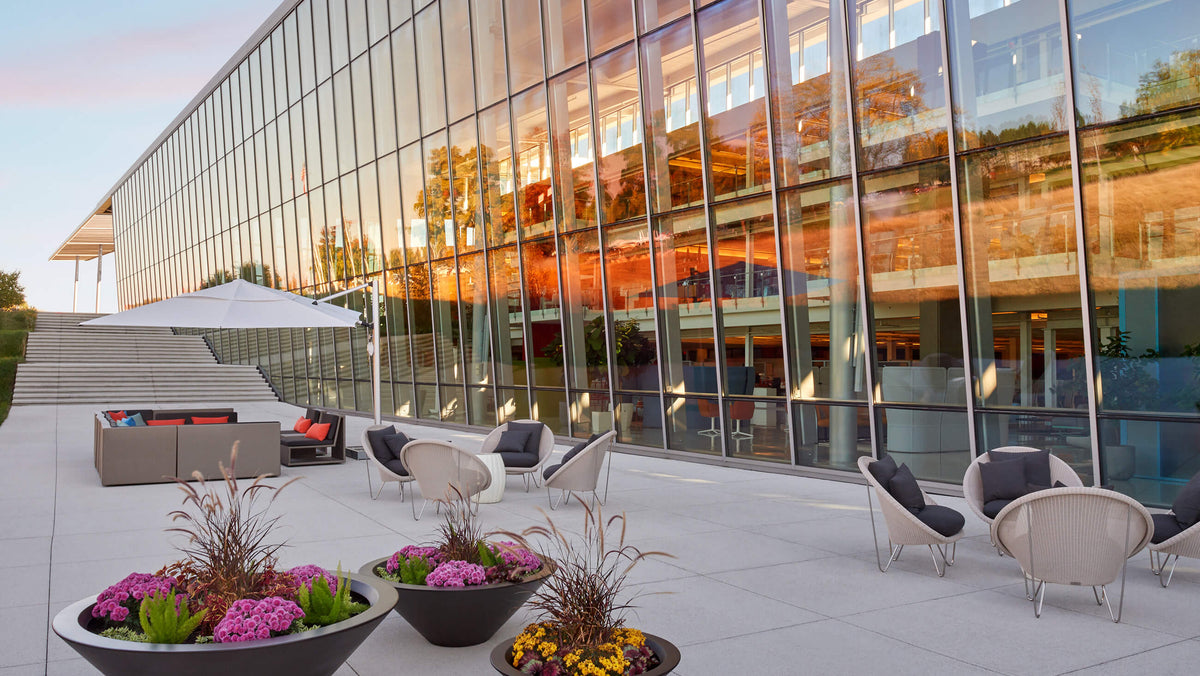Reimagining the Workplace

In today’s rapidly evolving work environment, the experience of work is undergoing a significant transformation. Over the past 8–10 years, the trend toward the experience economy has emerged, where goods or services are sold by emphasizing their impact on people’s lives. With this trend, brands need to connect with customers based on emotions and feelings.
The experience economy mindset is transforming how we work. With remote work and flexible hours becoming more common, the time we spend working alone has increased. While beneficial for focused tasks, this trend isn’t always ideal. Siloed activities lead to a lack of diverse input, which can result in lower quality outputs. To counteract this challenge, companies must create workplace environments that foster connections with coworkers and nurture corporate culture, making the office an appealing and truly beneficial destination.

Just as brands connect emotionally with customers to build loyalty, employers should create engaging work environments. Engaged employees are committed and connected, leading to better business outcomes. Providing a variety of spaces for focus, collaboration, connection, and restoration supports employees’ diverse needs and enhances their overall success. With the shift toward unassigned desks, more work happens in flexible areas, optimizing the workplace experience and fostering emotional connections with employees.
Brett Hautop, a seasoned architect and expert in workplace design, emphasizes the importance of creating environments that enhance human interaction and productivity. He is the Founding Partner of Workshape in Northern California. During Hautop’s career, which spans more than two decades, he has seen significant evolution in office environments, most recently driven by the need for flexibility and adaptability, partly provided by the hybrid work model.
One pivotal moment came very early in his career when he was tasked with consolidating three government agencies into one building. The project involved interviewing hundreds of employees, many of whom worked in suboptimal conditions. “They didn’t teach you about people in architecture school when I was there,” recalls Hautop. “Design is not just about aesthetics. These people were coming in and sitting in these miserable spaces, every single day.” This foundational experience shaped his approach to workplace design, emphasizing the human element in every project.

His time at LinkedIn further honed Hautop’s expertise, where he led the design and construction of numerous global projects, emphasizing functionality and employee well-being. Metrics around interactions and employee feedback reveal the impact of workspace changes and the value of design in enhancing productivity and satisfaction.
Hautop’s commitment to creating functional and supportive work environments became a driving force in his career. “We need more variety and choice to best suit people’s tasks and workstyles,” he explains. “And we need to have redundancy—even an abundance—of space options.” This approach is particularly relevant in the context of the hybrid work model, where flexibility and adaptability are key.
While there are many valuable aspects of remote work, companies need to understand and provide compelling reasons for employees to come into the office. In-person interactions should be intentional and designed to foster connection and collaboration.
Consider creating spaces that facilitate mentorship, learning, and team-building activities, which are difficult to replicate in a virtual environment. “These sorts of conversations actually work better when people can sit wherever they want and don’t have to go report to the same space,” says Hautop.
What does the future of work look like? Hautop highlights the need for companies to rethink their approach to office design. Traditional models of assigning desks and conference rooms are outdated. Organizations should focus on creating spaces that support specific activities and outcomes. For example, a project kickoff meeting might benefit from a dynamic, open space with writable surfaces, while a brainstorming session could thrive in a more relaxed, informal setting. “We are trying to develop new metrics for the quality of an experience when people get together for a specific purpose,” Hautop notes. “So, we’re looking at things like number of interactions, number of novel ideas. We’re reading body language and posture.”

He also advocates for the integration of technology in a way that enhances, rather than detracts from, the human experience. While technology streamlines certain tasks, it should not replace the need for meaningful human interactions. Instead, technology can support collaboration and innovation, allowing employees to focus on high-value activities.
This is the experience economy where— more than ever—emotional connection and memorable moments drive our decisions. “Careers are increasingly transient, and loyalty is earned, not assumed,” Hautop emphasizes. “The pandemic gave us the chance to rewrite history. There’s never been a better time to flip the script and create not just a place to work, but a beacon—a place where employees are trusted and empowered, where great work gets done, where innovation isn’t just a buzzword on a wall.” Organizations that prioritize the human experience and reimagine their spaces are the ones that will thrive in this new era.










Some things are too good to keep to yourself.